Jingwen Zhang
Large Language Models for Planning: A Comprehensive and Systematic Survey
May 26, 2025Abstract:Planning represents a fundamental capability of intelligent agents, requiring comprehensive environmental understanding, rigorous logical reasoning, and effective sequential decision-making. While Large Language Models (LLMs) have demonstrated remarkable performance on certain planning tasks, their broader application in this domain warrants systematic investigation. This paper presents a comprehensive review of LLM-based planning. Specifically, this survey is structured as follows: First, we establish the theoretical foundations by introducing essential definitions and categories about automated planning. Next, we provide a detailed taxonomy and analysis of contemporary LLM-based planning methodologies, categorizing them into three principal approaches: 1) External Module Augmented Methods that combine LLMs with additional components for planning, 2) Finetuning-based Methods that involve using trajectory data and feedback signals to adjust LLMs in order to improve their planning abilities, and 3) Searching-based Methods that break down complex tasks into simpler components, navigate the planning space, or enhance decoding strategies to find the best solutions. Subsequently, we systematically summarize existing evaluation frameworks, including benchmark datasets, evaluation metrics and performance comparisons between representative planning methods. Finally, we discuss the underlying mechanisms enabling LLM-based planning and outline promising research directions for this rapidly evolving field. We hope this survey will serve as a valuable resource to inspire innovation and drive progress in this field.
PR2: A Physics- and Photo-realistic Testbed for Embodied AI and Humanoid Robots
Sep 03, 2024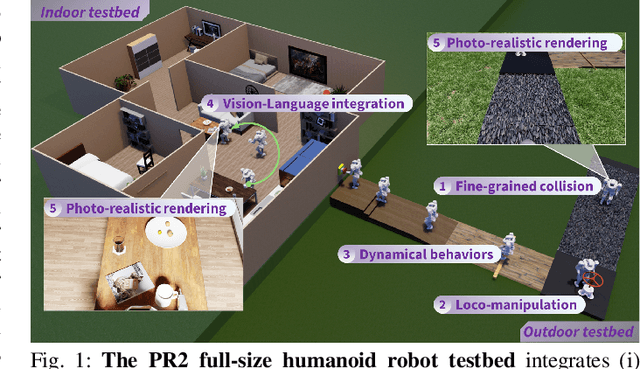

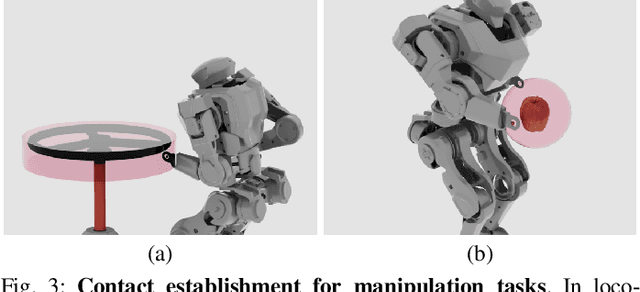

Abstract:This paper presents the development of a Physics-realistic and Photo-\underline{r}ealistic humanoid robot testbed, PR2, to facilitate collaborative research between Embodied Artificial Intelligence (Embodied AI) and robotics. PR2 offers high-quality scene rendering and robot dynamic simulation, enabling (i) the creation of diverse scenes using various digital assets, (ii) the integration of advanced perception or foundation models, and (iii) the implementation of planning and control algorithms for dynamic humanoid robot behaviors based on environmental feedback. The beta version of PR2 has been deployed for the simulation track of a nationwide full-size humanoid robot competition for college students, attracting 137 teams and over 400 participants within four months. This competition covered traditional tasks in bipedal walking, as well as novel challenges in loco-manipulation and language-instruction-based object search, marking a first for public college robotics competitions. A retrospective analysis of the competition suggests that future events should emphasize the integration of locomotion with manipulation and perception. By making the PR2 testbed publicly available at https://github.com/pr2-humanoid/PR2-Platform, we aim to further advance education and training in humanoid robotics.
Flight Structure Optimization of Modular Reconfigurable UAVs
Jul 04, 2024



Abstract:This paper presents a Genetic Algorithm (GA) designed to reconfigure a large group of modular Unmanned Aerial Vehicles (UAVs), each with different weights and inertia parameters, into an over-actuated flight structure with improved dynamic properties. Previous research efforts either utilized expert knowledge to design flight structures for a specific task or relied on enumeration-based algorithms that required extensive computation to find an optimal one. However, both approaches encounter challenges in accommodating the heterogeneity among modules. Our GA addresses these challenges by incorporating the complexities of over-actuation and dynamic properties into its formulation. Additionally, we employ a tree representation and a vector representation to describe flight structures, facilitating efficient crossover operations and fitness evaluations within the GA framework, respectively. Using cubic modular quadcopters capable of functioning as omni-directional thrust generators, we validate that the proposed approach can (i) adeptly identify suboptimal configurations ensuring over-actuation while ensuring trajectory tracking accuracy and (ii) significantly reduce computational costs compared to traditional enumeration-based methods.
CDM-MPC: An Integrated Dynamic Planning and Control Framework for Bipedal Robots Jumping
May 20, 2024



Abstract:Performing acrobatic maneuvers like dynamic jumping in bipedal robots presents significant challenges in terms of actuation, motion planning, and control. Traditional approaches to these tasks often simplify dynamics to enhance computational efficiency, potentially overlooking critical factors such as the control of centroidal angular momentum (CAM) and the variability of centroidal composite rigid body inertia (CCRBI). This paper introduces a novel integrated dynamic planning and control framework, termed centroidal dynamics model-based model predictive control (CDM-MPC), designed for robust jumping control that fully considers centroidal momentum and non-constant CCRBI. The framework comprises an optimization-based kinodynamic motion planner and an MPC controller for real-time trajectory tracking and replanning. Additionally, a centroidal momentum-based inverse kinematics (IK) solver and a landing heuristic controller are developed to ensure stability during high-impact landings. The efficacy of the CDM-MPC framework is validated through extensive testing on the full-sized humanoid robot KUAVO in both simulations and experiments.
Prove Symbolic Regression is NP-hard by Symbol Graph
Apr 22, 2024

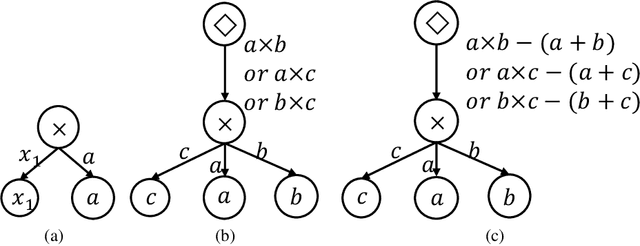
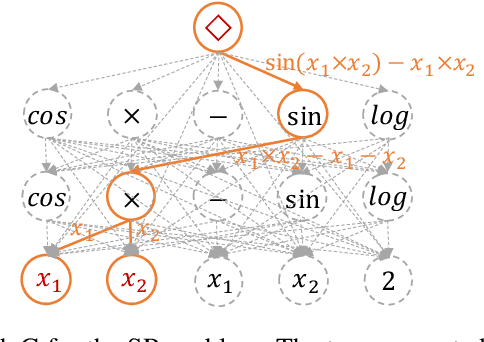
Abstract:Symbolic regression (SR) is the task of discovering a symbolic expression that fits a given data set from the space of mathematical expressions. Despite the abundance of research surrounding the SR problem, there's a scarcity of works that confirm its NP-hard nature. Therefore, this paper introduces the concept of a symbol graph as a comprehensive representation of the entire mathematical expression space, effectively illustrating the NP-hard characteristics of the SR problem. Leveraging the symbol graph, we establish a connection between the SR problem and the task of identifying an optimally fitted degree-constrained Steiner Arborescence (DCSAP). The complexity of DCSAP, which is proven to be NP-hard, directly implies the NP-hard nature of the SR problem.
How Johnny Can Persuade LLMs to Jailbreak Them: Rethinking Persuasion to Challenge AI Safety by Humanizing LLMs
Jan 23, 2024



Abstract:Most traditional AI safety research has approached AI models as machines and centered on algorithm-focused attacks developed by security experts. As large language models (LLMs) become increasingly common and competent, non-expert users can also impose risks during daily interactions. This paper introduces a new perspective to jailbreak LLMs as human-like communicators, to explore this overlooked intersection between everyday language interaction and AI safety. Specifically, we study how to persuade LLMs to jailbreak them. First, we propose a persuasion taxonomy derived from decades of social science research. Then, we apply the taxonomy to automatically generate interpretable persuasive adversarial prompts (PAP) to jailbreak LLMs. Results show that persuasion significantly increases the jailbreak performance across all risk categories: PAP consistently achieves an attack success rate of over $92\%$ on Llama 2-7b Chat, GPT-3.5, and GPT-4 in $10$ trials, surpassing recent algorithm-focused attacks. On the defense side, we explore various mechanisms against PAP and, found a significant gap in existing defenses, and advocate for more fundamental mitigation for highly interactive LLMs
Robust 3D Tracking with Quality-Aware Shape Completion
Dec 17, 2023Abstract:3D single object tracking remains a challenging problem due to the sparsity and incompleteness of the point clouds. Existing algorithms attempt to address the challenges in two strategies. The first strategy is to learn dense geometric features based on the captured sparse point cloud. Nevertheless, it is quite a formidable task since the learned dense geometric features are with high uncertainty for depicting the shape of the target object. The other strategy is to aggregate the sparse geometric features of multiple templates to enrich the shape information, which is a routine solution in 2D tracking. However, aggregating the coarse shape representations can hardly yield a precise shape representation. Different from 2D pixels, 3D points of different frames can be directly fused by coordinate transform, i.e., shape completion. Considering that, we propose to construct a synthetic target representation composed of dense and complete point clouds depicting the target shape precisely by shape completion for robust 3D tracking. Specifically, we design a voxelized 3D tracking framework with shape completion, in which we propose a quality-aware shape completion mechanism to alleviate the adverse effect of noisy historical predictions. It enables us to effectively construct and leverage the synthetic target representation. Besides, we also develop a voxelized relation modeling module and box refinement module to improve tracking performance. Favorable performance against state-of-the-art algorithms on three benchmarks demonstrates the effectiveness and generalization ability of our method.
Design of a Jumping Control Framework with Heuristic Landing for Bipedal Robots
Apr 02, 2023



Abstract:Generating dynamic jumping motions on legged robots remains a challenging control problem as the full flight phase and large landing impact are expected. Compared to quadrupedal robots or other multi-legged robots, bipedal robots place higher requirements for the control strategy given a much smaller footprint. To solve this problem, a novel heuristic landing planner is proposed in this paper. With the momentum feedback during the flight phase, landing locations can be updated to minimize the influence of uncertainties from tracking errors or external disturbances when landing. To the best of our knowledge, this is the first approach to take advantage of the flight phase to reduce the impact of the jump landing which is implemented in the actual robot. By integrating it with a modified kino-dynamics motion planner with centroidal momentum and a low-level controller which explores the whole-body dynamics to hierarchically handle multiple tasks, a complete and versatile jumping control framework is designed in this paper. Extensive results of simulation and hardware jumping experiments on a miniature bipedal robot with proprioceptive actuation are provided to demonstrate that the proposed framework is able to achieve human-like efficient and robust jumping tasks, including directional jump, twisting jump, step jump, and somersaults.
Pathology Steered Stratification Network for Subtype Identification in Alzheimer's Disease
Oct 12, 2022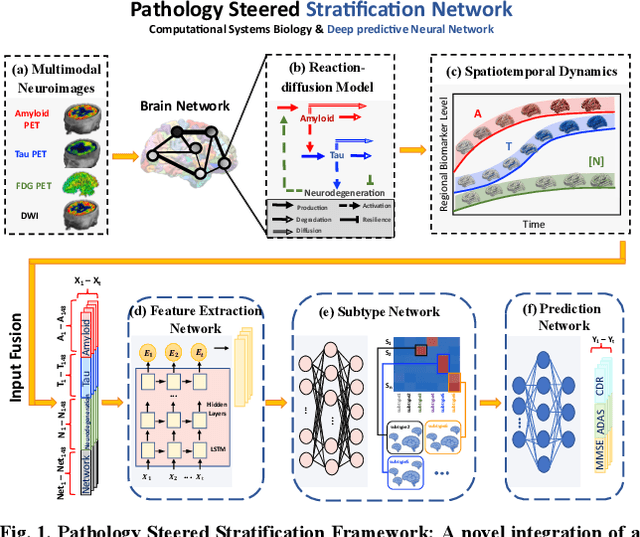
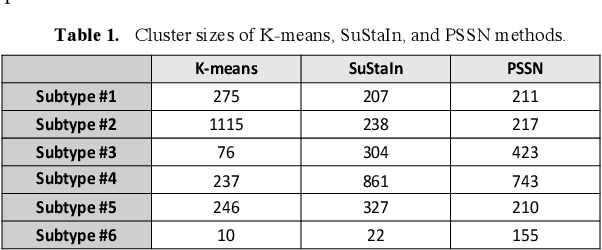
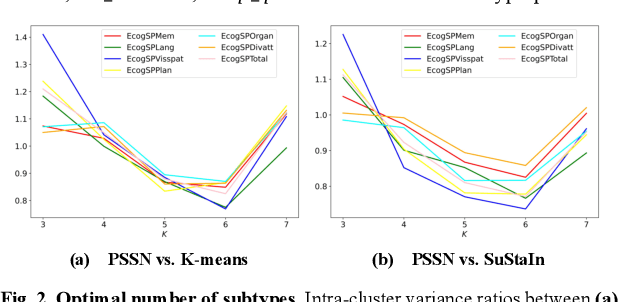
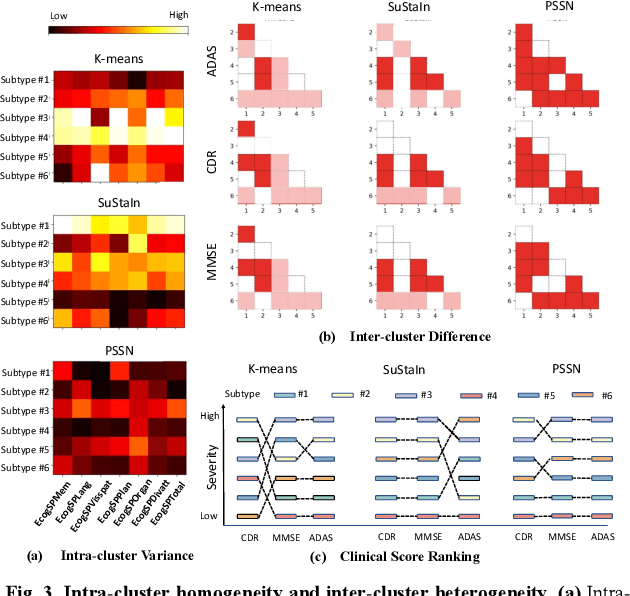
Abstract:Alzheimer's disease (AD) is a heterogeneous, multifactorial neurodegenerative disorder characterized by beta-amyloid, pathologic tau, and neurodegeneration. The massive heterogeneity between neurobiological examinations and clinical assessment is the current biggest challenge in the early diagnosis of Alzheimer's disease, urging for a comprehensive stratification of the aging population that is defined by reliable neurobiological biomarkers and closely associated with clinical outcomes. However, existing statistical inference approaches in neuroimaging studies of AD subtype identification fail to take into account the neuropathological domain knowledge, which could lead to ill-posed results that are sometimes inconsistent with neurological principles. To fill this knowledge gap, we propose a novel pathology steered stratification network (PSSN) that integrates mainstream AD pathology with multimodal longitudinal neuroimaging data to categorize the aging population. By combining theory-based biological modeling and data-driven deep learning, this cross-disciplinary approach can not only generate long-term biomarker prediction consistent with the end-state of individuals but also stratifies subjects into fine-grained subtypes with distinct neurological underpinnings, where ag-ing brains within the same subtype share com-mon biological behaviors that emerge as similar trajectories of cognitive decline. Our stratification outperforms K-means and SuStaIn in both inter-cluster heterogeneity and intra-cluster homogeneity of various clinical scores. Importantly, we identify six subtypes spanning AD spectrum, where each subtype exhibits a distinctive biomarker pattern that is consistent with its clinical outcome. A disease evolutionary graph is further provided by quantifying subtype transition probabilities, which may assist pre-symptomatic diagnosis and guide therapeutic treatments.
Social Influence Dialogue Systems: A Scoping Survey of the Efforts Towards Influence Capabilities of Dialogue Systems
Oct 11, 2022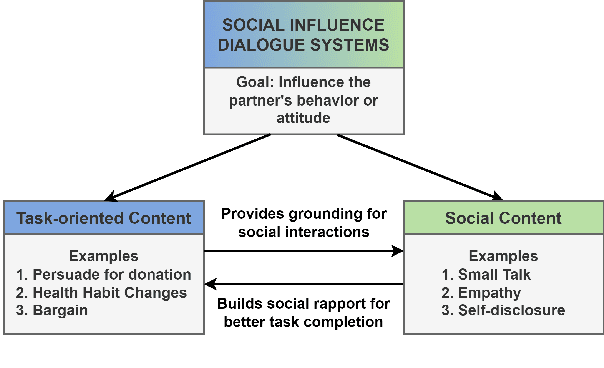
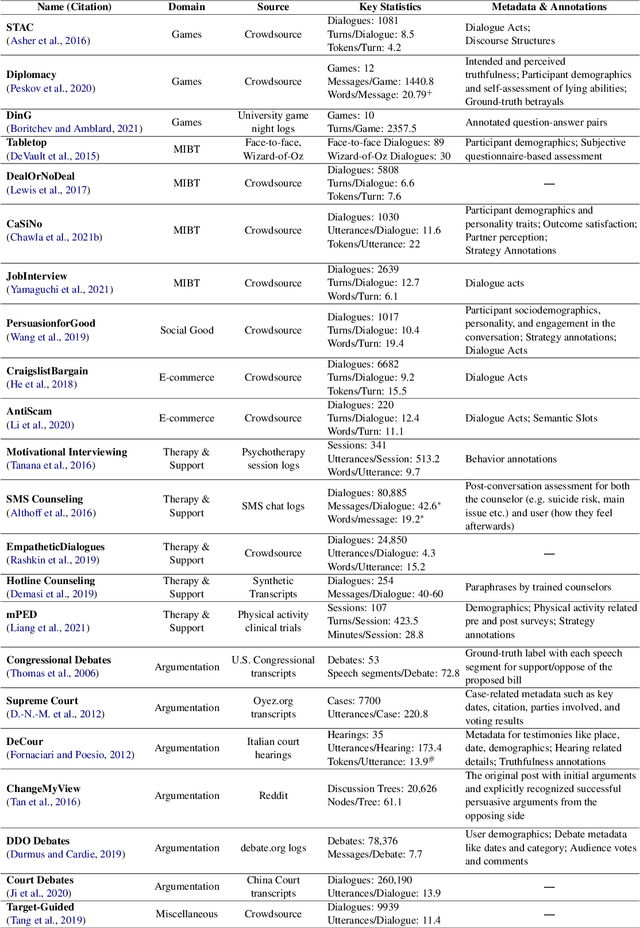
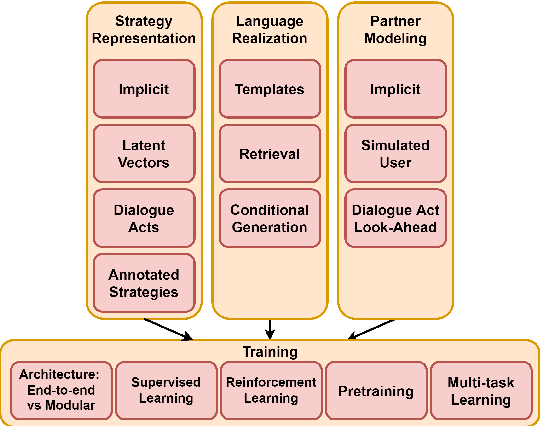
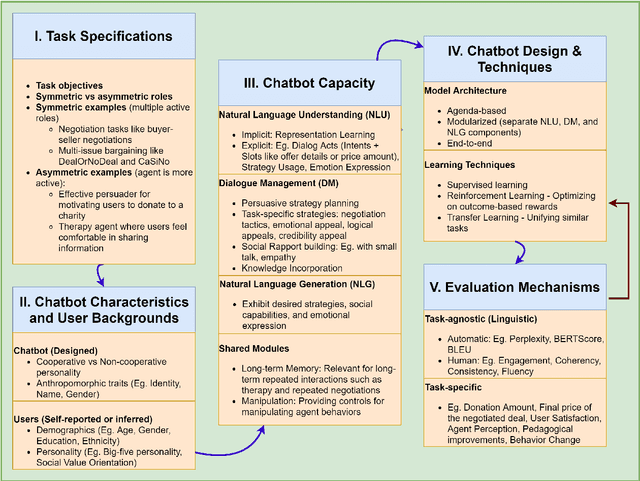
Abstract:Dialogue systems capable of social influence such as persuasion, negotiation, and therapy, are essential for extending the use of technology to numerous realistic scenarios. However, existing research primarily focuses on either task-oriented or open-domain scenarios, a categorization that has been inadequate for capturing influence skills systematically. There exists no formal definition or category for dialogue systems with these skills and data-driven efforts in this direction are highly limited. In this work, we formally define and introduce the category of \emph{social influence dialogue systems} that influence users' cognitive and emotional responses, leading to changes in thoughts, opinions, and behaviors through natural conversations. We present a survey of various tasks, datasets, and methods, compiling the progress across seven diverse domains. We discuss the commonalities and differences between the examined systems, identify limitations, and recommend future directions. This study serves as a comprehensive reference for social influence dialogue systems to inspire more dedicated research and discussion in this emerging area.
 Add to Chrome
Add to Chrome Add to Firefox
Add to Firefox Add to Edge
Add to Edge